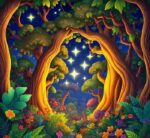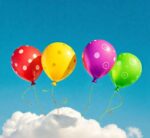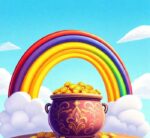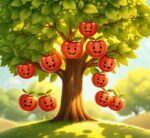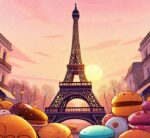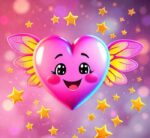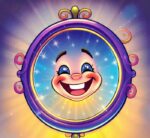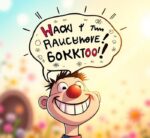- You are here:
- Home »
- words
- » Kindergarten Words That Start With R [LIST]
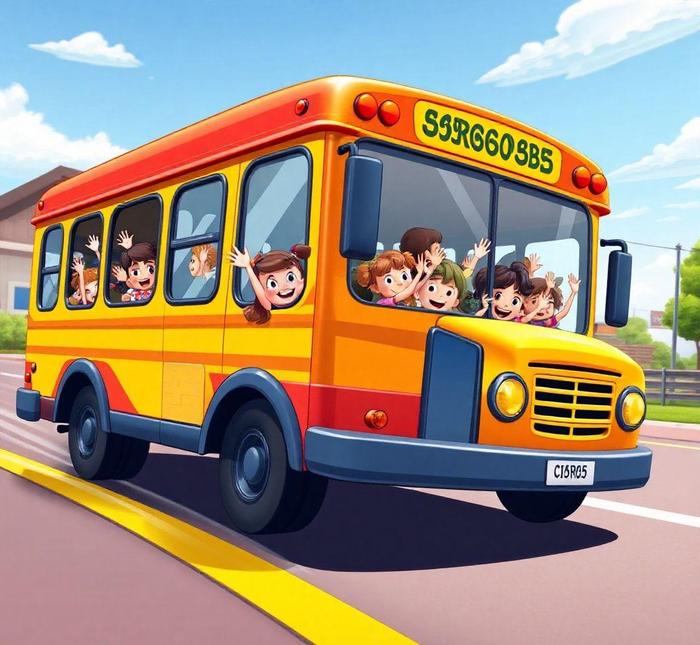
Kindergarten Words That Start With R [LIST]
Teaching young children the alphabet is a crucial part of their early education, and focusing on words that begin with specific letters can help them master phonics and spelling. The letter ‘R’ offers a variety of simple and fun words that are perfect for kindergarten students to learn. From everyday objects like ‘rabbit’ and ‘rain’ to more abstract concepts like “respect”, words that start with ‘R’ provide an opportunity for children to expand their vocabulary while also practicing the sounds of the letter. Incorporating these words into games, stories, and activities can make learning more engaging and interactive for young learners.
In this article, we’ve compiled a list of kindergarten-friendly words that begin with ‘R’ to help educators, parents, and caregivers create meaningful learning experiences. Whether you’re working on phonics, sight words, or just looking for inspiration to build language skills, this list offers a great starting point. From animals and nature to emotions and actions, the variety of words included will assist children in developing a strong foundation for reading and communication.
Kindergarten Words That Start With R
1. rabbit
A rabbit is a small, furry animal with long ears and a short tail. Rabbits are known for hopping quickly and are often found in gardens and forests.
Examples
- The rabbit hops around the garden.
- We saw a brown rabbit in the field today.
2. rain
Rain is water that falls from the clouds in the sky. It is an important part of the water cycle and helps plants grow.
Examples
- The rain is falling softly on the ground.
- We can play outside when the rain stops.
3. red
Red is a bright color, often associated with things like apples, stop signs, and strawberries.
Examples
- The apple is red and shiny.
- She wore a red dress to the party.
4. rock
A rock is a solid piece of the Earth’s surface. Rocks come in many sizes and shapes and are found everywhere outdoors.
Examples
- The big rock is sitting by the tree.
- We like to skip rocks on the lake.
5. robot
A robot is a machine that can perform tasks automatically. Some robots can move, talk, and even think like humans.
Examples
- The robot can move and talk.
- We built a small robot in science class.
6. rainbow
A rainbow is a colorful arc that appears in the sky after rain. It is caused by sunlight shining through water droplets.
Examples
- After the rain, we saw a beautiful rainbow in the sky.
- The rainbow had all the colors-red, orange, yellow, green, blue, indigo, and violet.
7. ring
A ring is a small, round object, often worn as jewelry. It can also refer to a sound, like a bell ringing.
Examples
- She wore a gold ring on her finger.
- The bell made a loud ringing sound.
8. rocket
A rocket is a vehicle that travels into space. It uses powerful engines to push it upwards into the sky.
Examples
- The rocket flew high into the sky.
- We watched the rocket launch on TV.
9. raspberry
A raspberry is a small, red fruit that is sweet and juicy. Raspberries grow on bushes and are often eaten fresh or used in desserts.
Examples
- I love eating sweet, red raspberries.
- She picked a basket of fresh raspberries from the garden.
10. road
A road is a path that cars and people travel on. Roads are made of asphalt or gravel and connect different places.
Examples
- The car drives on the road.
- We walked down the road to the park.
11. raincoat
A raincoat is a waterproof jacket worn to protect the body from rain. It helps keep you dry when the weather is wet.
Examples
- I put on my raincoat because it’s raining.
- She wore her yellow raincoat to stay dry.
12. roar
A roar is a loud, deep sound that some animals, like lions, make. Thunder also creates a roaring sound during storms.
Examples
- The lion gave a loud roar in the zoo.
- The thunder made a loud roar in the sky.
13. run
To run means to move quickly on foot. Running is a common way to exercise and play.
Examples
- I like to run in the park with my dog.
- She runs fast during her track race.
14. rainstorm
A rainstorm is a heavy rainfall, often with thunder and lightning. It can make the ground wet and the air smell fresh.
Examples
- We stayed inside during the rainstorm.
- The rainstorm lasted for an hour before it stopped.
15. reach
To reach means to stretch out or extend your arm to grab or touch something.
Examples
- I can’t reach the top shelf.
- She reached for the cookie jar on the counter.
16. redfish
A redfish is a type of fish known for its reddish color. They are often found in warm coastal waters and are popular with fishermen.
Examples
- The fisherman caught a big redfish in the lake.
- Redfish are found in warm ocean waters.
17. reindeer
A reindeer is a large, hoofed animal with antlers. They are often associated with Christmas and live in cold, northern regions.
Examples
- The reindeer pulls Santa’s sleigh.
- Reindeer live in cold, snowy places like the North Pole.
18. rice
Rice is a type of grain that is commonly eaten around the world. It grows in wet fields and is a staple food for many people.
Examples
- We had rice with our dinner last night.
- Rice grows in fields with lots of water.
19. rocking chair
A rocking chair is a chair that moves back and forth on curved legs. It is often used for relaxing or soothing babies.
Examples
- Grandma sits in her rocking chair on the porch.
- The baby loves to be rocked in her chair.
20. rainy
Rainy describes a day or weather when it is raining. It means there is a lot of water falling from the sky.
Examples
- It’s a rainy day, so we stayed inside.
- I like to watch the rainy clouds from my window.
21. recycle
To recycle means to use old materials to make new things. It helps reduce waste and protect the environment.
Examples
- We recycle paper and plastic to help the Earth.
- Don’t throw the bottle away; recycle it instead.
22. raccoon
A raccoon is a small, nocturnal animal with gray fur and a distinctive black mask-like pattern around its eyes. Raccoons are often found in forests and urban areas.
Examples
- The raccoon is looking for food in the trash.
- Raccoons are known for their black masks around their eyes.
23. race
A race is a competition where people or animals try to go from one point to another the fastest. Racing is often done in sports or for fun.
Examples
- I won the race and came in first place!
- We had a race to see who could run the fastest.
24. rest
To rest means to relax or take a break. It is important for your body to rest after physical activity to stay healthy.
Examples
- After a long day, I like to rest on the couch.
- You should rest when you’re feeling tired.
25. round
Round describes something that has a circular shape, like a ball or a coin.
Examples
- The ball is round and bouncy.
- We can play with the round toy car.
26. runway
A runway is a long, flat path used for airplanes to take off and land, or for models to walk during fashion shows.
Examples
- The airplane takes off from the runway.
- We watched the fashion show models walk down the runway.
27. rainforest
A rainforest is a type of forest that gets a lot of rain. They are dense with trees, plants, and animals, and are usually found in warm, tropical areas.
Examples
- The Amazon rainforest is home to many animals.
- Rainforests are very wet and have many tall trees.
28. rooster
A rooster is a male chicken known for its loud crowing, especially at sunrise. Roosters are often found on farms.
Examples
- The rooster crowed early in the morning.
- On the farm, the rooster wakes everyone up.
29. rocketship
A rocketship is a type of spacecraft used to travel into space. It is designed to travel beyond Earth’s atmosphere.
Examples
- The rocketship flew into space on a mission.
- We learned about astronauts and rocketships in school.
30. rattle
A rattle is a toy that makes noise when shaken, often used to entertain babies. It can also refer to a shaking sound, like the one some snakes make.
Examples
- The baby likes to shake the rattle.
- I heard a rattle in the grass and looked closely.
31. rainy day
A rainy day is a day when it rains all or most of the day. People often stay inside and do indoor activities when it’s rainy.
Examples
- A rainy day is perfect for staying indoors and reading.
- On a rainy day, we enjoy drinking hot chocolate.
32. rubber
Rubber is a stretchy, flexible material. It is used for making things like boots, bands, and tires.
Examples
- I wore my rubber boots in the puddles.
- We use rubber bands to hold the papers together.
33. raisin
A raisin is a dried grape. It is small, sweet, and often used in baking or eaten as a snack.
Examples
- I like to eat raisins as a snack.
- Raisins are dried grapes that are sweet.
34. ribbon
A ribbon is a long piece of fabric, often colorful, used for decoration or tying things together, like gifts or hair.
Examples
- She tied a ribbon in her hair.
- We decorated the gift with a beautiful ribbon.
35. replay
To replay means to watch or do something again. This is often used when viewing videos or playing games.
Examples
- We watched the replay of the soccer game.
- Can you replay the video? I didn’t see it.
36. read
To read means to look at written words and understand them. Reading is a way to learn new things and enjoy stories.
Examples
- I love to read my favorite books.
- We read a story in class today.
37. restroom
A restroom is a place where people can go to use the toilet and wash their hands. It is often found in public places.
Examples
- I need to use the restroom before we leave.
- The restroom is down the hall to the left.
38. refrigerator
A refrigerator is a large appliance used to keep food and drinks cold. It is an important part of the kitchen.
Examples
- We keep the milk in the refrigerator to keep it cold.
- The refrigerator is full of fresh food.
39. ruler
A ruler is a tool used to measure length and draw straight lines. It is usually made of wood, plastic, or metal.
Examples
- Use the ruler to draw a straight line.
- The teacher showed us how to measure with a ruler.
40. rose
A rose is a type of flower known for its beauty and fragrance. Roses come in many colors, such as red, pink, and yellow.
Examples
- The rose smelled so sweet in the garden.
- She gave me a red rose for my birthday.
41. rust
Rust is a reddish-brown coating that forms on metal when it is exposed to water and air for a long time.
Examples
- The old bicycle is covered in rust.
- Rust can form on metal when it gets wet and doesn’t dry.
42. reptile
A reptile is a type of animal that is cold-blooded and often has scales or dry skin. Common reptiles include snakes, lizards, and turtles.
Examples
- A snake is a reptile.
- Reptiles like lizards and turtles can live both on land and in water.
43. row
A row is a line of things placed next to each other, like seats, flowers, or buildings.
Examples
- We sat in a row at the concert.
- The chairs are lined up in a row.
Historical Context

The significance of the letter “R” in the development of language, particularly in the early stages of a child’s education, is rooted in both the history of written language and the cognitive development of young learners. The emergence of early literacy in the classroom has been shaped by historical shifts in education, particularly in the Western world. By the 19th century, when formalized kindergarten systems began to take shape, educators began to place a greater emphasis on phonetic awareness and the early teaching of letters and sounds. In many cultures, the teaching of reading and writing evolved through a gradual understanding of how children absorb and process language.
The idea of early education, which forms the foundation of modern-day kindergarten, was greatly influenced by educators like Friedrich Froebel, who founded the first kindergarten in Germany in 1837. Froebel’s educational philosophy emphasized the importance of play, discovery, and natural learning processes. His curriculum included activities that allowed children to engage with language through songs, rhymes, and stories, many of which featured words beginning with distinct sounds like “R.” Phonics instruction soon became a cornerstone of kindergarten programs, and letters like “R” were highlighted as key components of learning due to their distinct sounds and frequent occurrence in everyday vocabulary.
By the early 20th century, the rise of standardized educational models further shaped how kindergarten teachers approached the teaching of letters and words. In the United States, for instance, the publication of books like the Dick and Jane series in the 1930s introduced young learners to simple words starting with every letter of the alphabet, including “R.” These early readers helped normalize the teaching of words that children could immediately recognize and use in their daily lives, fostering not only literacy skills but also a sense of mastery over language.
The historical context of kindergarten education highlights how foundational the teaching of words that start with “R” is to building a solid base for language development. These words, often chosen for their phonetic simplicity and common use in daily speech, become stepping stones for children’s growing vocabulary and understanding of how language works.
Word Origins And Etymology
The exploration of words that begin with “R” takes us through the fascinating world of etymology—the study of the origins and histories of words. Words starting with “R” come from a rich tapestry of linguistic sources, influenced by centuries of language evolution across cultures.
The letter “R” itself is rooted in the Latin alphabet, which in turn is derived from the Etruscan alphabet. In Latin, the letter “R” represented a sound akin to the "r" sound we know today, often associated with the rolling or trilled sound made by the tongue. This phoneme, represented by the letter “R,” has roots in the Proto-Indo-European language, where it represented a variety of resonant sounds, such as the vibrating sound made by a rolling tongue or vibrating vocal cords.
As for specific kindergarten words that begin with “R,” their origins span a range of linguistic families. Take the word “rain,” for instance. This simple, yet foundational word comes from the Old English regn, which shares roots with similar words in Germanic languages, such as the Dutch regen and the German Regen. The evolution of the word reflects the deep connection humans have had with the natural world for millennia, and it’s one of those words that appear early in language education due to its simple, visual concept and commonality in children’s daily experiences.
Similarly, the word “rabbit” has an intriguing etymological journey. Originating from the Old French rabotte, which was a diminutive form of rabot (meaning "a young animal"), the word gradually evolved into the modern English term. In a way, “rabbit” reflects the cultural and linguistic exchanges between English and other European languages. It’s a perfect example of how words passed down through generations become part of the vocabulary taught in early childhood education.
Other “R” words like “rock,” “rose,” and “run” are similarly drawn from ancient linguistic traditions. “Rock” comes from the Old English rocc, tracing back to Proto-Germanic rokk, while “rose” comes from the Latin rosa, which was borrowed from the Greek rhodon. The word “run,” which appears in so many early reader books, originates from the Old English rinnan, which is related to the verb rennen, meaning to flow or to run.
By examining the etymology of these simple kindergarten words, it becomes clear how deeply interconnected language is with human history. Each word has traveled through time, adapting to changing pronunciations, meanings, and cultural contexts, all the while providing a foundational element in the process of early literacy.
Common Misconceptions
Despite their importance in early childhood education, words beginning with “R” often come with some common misconceptions, particularly in the realm of pronunciation and meaning. Since “R” is a unique and challenging sound for many young learners to master, understanding how it functions in different words can sometimes be a source of confusion.
One common misconception involves the difficulty children face in pronouncing the “R” sound itself. Many kindergarten-aged children, especially in the early stages of speech development, might struggle with rolling or articulating the “R” sound. This can lead to mispronunciations like substituting the “R” sound with a “W” sound (for example, saying “wabbit” instead of “rabbit”) or omitting it entirely. While this is a normal part of language development, it is important for educators to recognize the challenges children face in articulating the sound and to provide appropriate support.
Another misconception arises from the apparent simplicity of “R” words. Words like “rose,” “rain,” or “rock” seem straightforward, but for young children learning to read, these words can be tricky due to the combination of the “R” sound with other vowel and consonant sounds. The “R” sound is often part of blends (as in “run” or “rock”) or digraphs (as in “rain” or “rainbow”), which can confuse children as they try to decode the word. This is especially true for children who are learning English as a second language, as the “R” sound does not appear in all languages or may be pronounced differently.
Additionally, some words that begin with “R” are frequently misused due to their similar-sounding counterparts. For example, the words “right” and “rite” are often confused. While “right” refers to correctness or direction, and “rite” refers to a ceremonial act, the phonetic similarity can cause difficulties in distinguishing the two, especially for early readers. Understanding the subtle differences between homophones (words that sound the same but have different meanings) is a challenge for young learners, and words starting with “R” are no exception.
Conclusion
The journey of teaching kindergarten words that begin with the letter “R” is not only about introducing sounds and vocabulary, but also about unlocking the rich history, intricate phonetic relationships, and etymological stories that each word carries. From historical roots in early education systems to the fascinating linguistic origins of each term, “R” words have deep connections to both the development of language and the way young minds engage with it. Understanding these words’ history, origins, and common challenges helps illuminate the complex yet rewarding process of early literacy education.
Whether it’s the historical significance of phonics instruction, the rich etymology of each word, or the common misconceptions that arise during learning, words starting with “R” provide valuable lessons for both teachers and children alike. As children begin their educational journey, the foundation laid by these simple, yet powerful words forms the bedrock for their future literacy skills.

